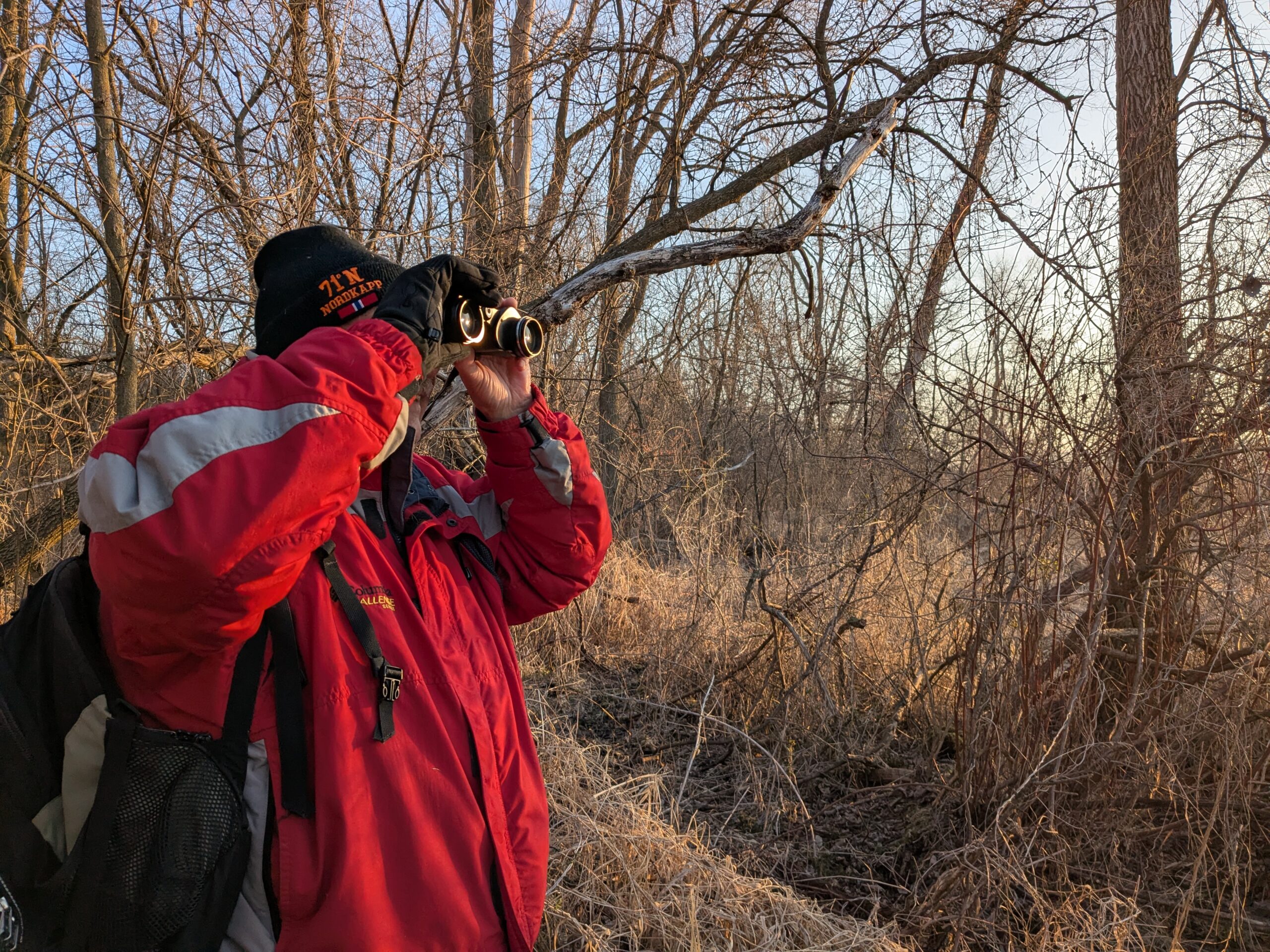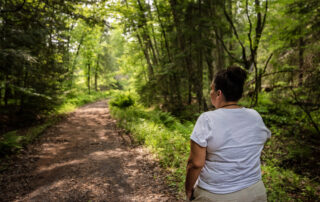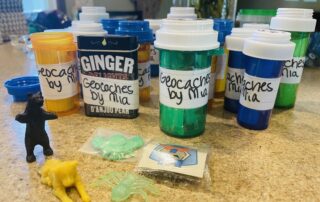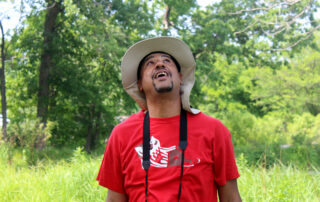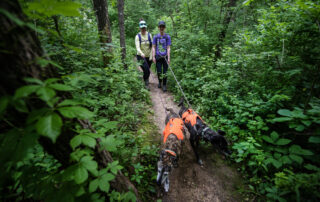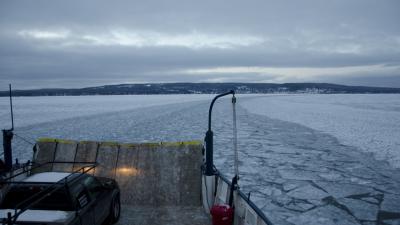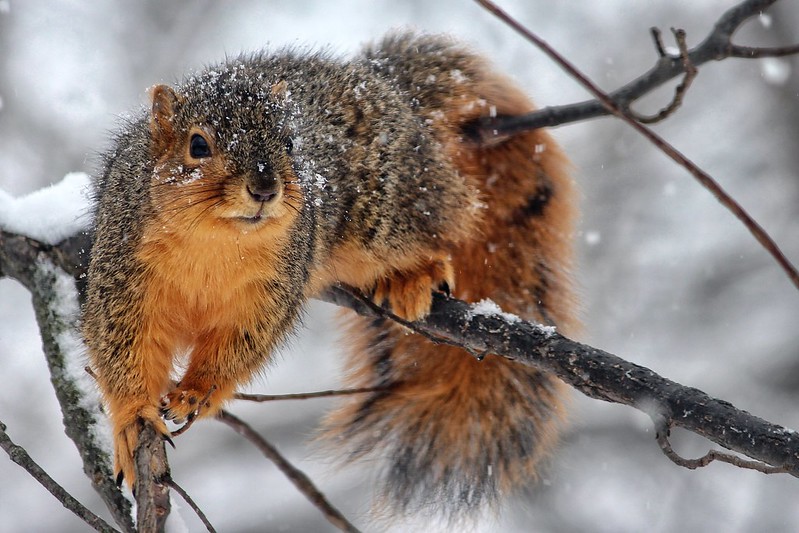One day each spring, volunteers around Wisconsin get up at dawn to participate in the International Crane Foundation’s Annual Midwest Crane Count. It’s a long-running citizen science project that helps collect data about sandhill and whooping cranes. As WPR’s Richelle Wilson tells us, it’s a chance for some people to connect with friends.
==
It was 4 a.m. on Saturday, April 12, 2025 — an hour for early birds. Thousands of volunteers had set their alarms and were heading out to their local wetlands and birding hotspots to look — and listen — for cranes. For me, that meant waking up at 3:30 a.m. to drive across Madison and meet my guides, Mark Hendrickson and Mark Hanson, who are longtime veterans of the count.
There’s usually a third Mark, too: Mark Johnson, who couldn’t make it this year. Hendrickson was the first of the Marks to volunteer for the count in 1979, just three years after the first-ever sandhill crane count in Columbia County.
“When I was heading out in 1979, three cranes got up right next to me from the marshland and did their slow-motion flapping of their wings and took off. I go, ‘Wow, I have to do this again,’” Hendrickson said.

Mark Hendrickson has been participating in the Annual Midwest Crane Count since 1979. Over the years, Mark Hanson and Mark Johnson joined him to form a trio that now goes together every year. Richelle Wilson/WPR
Eventually, Johnson and Hanson joined him, and now the trio has been doing the count together for decades. You might say these guys are birds of a feather. They often get together to go hiking, hunting, or fishing and help each other with woodworking projects and home repairs.
“For the first few years, I was here all by myself,” Hendrickson said. “It’s kind of nice having your best friends with you.”
Hendrickson and Hanson said they don’t consider themselves birders, but the crane count is a beloved annual tradition for the Marks. They’ve been coming back to the same spot each year, the Goose Lake Wildlife Area near Deerfield, a wetland property managed by the Wisconsin Department of Natural Resources.

Mark Hendrickson, left, and Mark Hanson hike 45 minutes to reach this location, where they start the crane count. One year, they camped in this area — an experience they don’t plan to repeat given the cold weather typical in April. Richelle Wilson/WPR
“There are some sites in Wisconsin where you might see lots and lots of cranes. We’re not one of them,” Hendrickson said with a laugh.
But they have a fondness for the place. Over the years, they’ve brought different people along, including their kids and a Girl Scout troop.
“We’ve been out here in the rain. We’ve walked through some snow. One year, we even spent the night, under the stars, no tent,” Hanson said.
“We did it once,” he added with a laugh.
Every year, the Marks hike about 45 minutes to their trusty lookout spot overlooking marshland. We arrived just before 5:30 a.m., when the two-hour count officially starts.
While they always hope to see cranes, it’s really more about listening. One truism of birding is that you often hear a bird before you see it. For the first half hour, we heard all kinds of wildlife sounds: insects buzzing, geese calling, cardinals chirping and the “peent peent” of a woodcock.
But no cranes. Not yet.

Mark Hendrickson and Marks Hanson, also known as the Marks, have returned to the same count spot, Goose Lake Wildlife Area, year after year. The count window is 5:30 a.m. to 7:30 a.m. since birds are often active at dawn. Richelle Wilson/WPR
And that’s OK. For the Marks, the crane count is an opportunity for quiet reflection.
“We mostly listen,” Hanson said. “We give each other hard times, kid each other — you know, within reason.”
Hendrickson keeps a notebook of their observations that goes back decades, where he writes down every time they see or hear cranes. Later in the day, he sends the numbers to the International Crane Foundation.
“I’m not chronological … I just find a random page,” he said with a laugh as he flipped through the book. “In ’03, we saw quite a few flying … Several in flight in 2005 when we camped.”

For decades, Mark Hendrickson has used this same notebook to keep track of the cranes they hear and see during the count. Richelle Wilson/WPR
Around 6 a.m., we heard them: the first crane calls of the day. I could tell these were cranes because of their signature sound, but my ears aren’t trained to pick out how many we were hearing. The Marks estimated three breeding pairs, so that’s what Hendrickson wrote down. It’s not an exact science, but the data provides a useful snapshot for conservation biologists to understand how many cranes are in Wisconsin and where their breeding grounds are, which can help with monitoring threats like avian flu.
After hearing that first call, we moved deeper into a more wooded area by the marsh’s edge. A little while later, we heard a second round of crane calls. And just before we left, a third. All in all, we didn’t see any cranes, but we heard eight pairs.
On the walk back to the car, I asked the Marks what they think about the proposed sandhill crane hunt in Wisconsin. Hendrickson doesn’t hunt. Hanson said he hunts pheasants but wouldn’t hunt cranes.
“Cranes are kind of spiritual in a way,” Hanson said. “They’re not meant for eating. They’re a symbol of evolution in a way — you know, they’re really, really old. They’ve been around for millions of years.”

Mark Hanson has been participating in the crane count with his friends, the “other Marks,” since the early 1990s. He says he wouldn’t hunt sandhill cranes because he considers them to be spiritual. Richelle Wilson/WPR
For the Marks — including Johnson, who will be back with the crew next year — the crane count helps them stay connected to each other and to the wetlands these cranes call home.
“You get a sense of ownership of the land,” Hendrickson said. “I mean, this is state land, this is DNR land. But for these two hours on a Saturday morning, it’s our land.”
MUSIC: “Up River” by Josh Wilson
